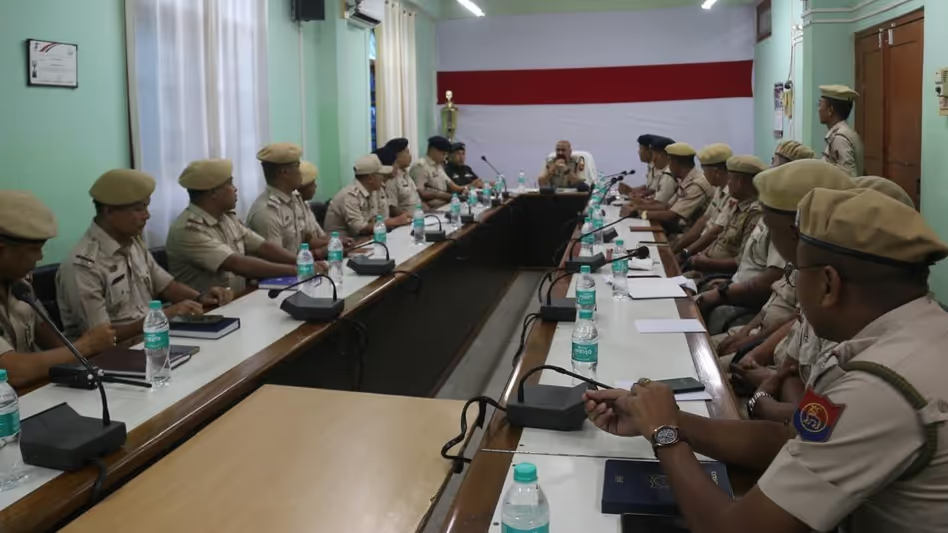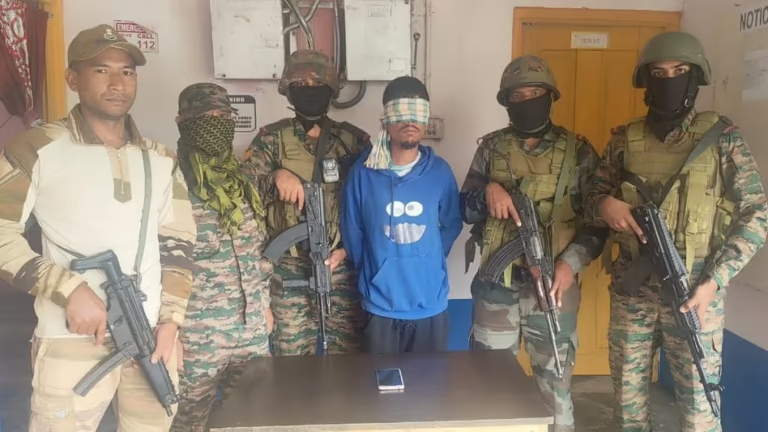Strengthening Security: DGP Rajiv Singh’s High-Stakes Visit to Bishnupur & Churachandpur
Short Summary
Manipur’s Director General of Police, Rajiv Singh, visited Bishnupur and Churachandpur districts on July 18 to conduct a comprehensive review of the prevailing law-and-order situation. During his visit, he interacted with district police officers, personnel from Central Armed Police Forces (CAPFs), and probationers, aiming to boost morale and enhance coordination. The inspection concluded with a felicitation ceremony in Bishnupur where commendation discs were presented to dedicated officers
Introduction: Why This Visit Matters Now
Ever wonder why a top cop would personally visit conflict-hit regions? With Manipur’s ethnic tensions simmering since May 2023, Bishnupur and Churachandpur have been on high alert. DGP Rajiv Singh’s visit isn’t ceremonial—it speaks volumes. It’s about community reassurance, strategy recalibration, and institutional solidarity.
1. Manipur’s Troubled Backdrop
Let’s rewind. Manipur has been reeling since violent clashes erupted on May 3, 2023, between the Meitei and Kuki-Zo communities. The official toll? At least 258 deaths and over 60,000 displaced as of November 2024. Ethnic hostilities, population pressure, and legal tussles over Scheduled Tribe status fueled the fire. Bishnupur and Churachandpur, straddling the volatile valley-hill interface, are ground zero. In such a fraught landscape, law enforcement isn’t just policy—it’s the front line of peace.
2. Meet the Man: DGP Rajiv Singh
Rajiv Singh isn’t just any officer. As Manipur’s Director General of Police, he oversees the state’s policing efforts amid escalating unrest. With frequent clashes and deep-rooted mistrust among communities, a DGP’s field presence signals serious intent—part comfort, part command. His on-site visit underlines unwavering administrative focus.
3. The Core: Law & Order Pulse Check
On July 18, Singh toured both districts—meeting District Police Officers (DPOs), station heads, CAPF officers, and even probationers in Churachandpur. He evaluated active security strategies, operational readiness, civilian policing interactions, and troop morale. Think of it as the CEO inspecting operations to ensure no weak links—or leaks—exist.
4. It’s Also a Pep Talk
Visiting troops in conflict zones does more than inspect—it motivates. Singh’s interactions surged morale among local police and CAPF teams by publicly recognizing their sacrifices. And later, Bishopuni’s ceremony, complete with commendation discs, reaffirmed that their efforts don’t go unnoticed
5. Policing Amidst Ethnic Strains
Why is Bishnupur risky? It lies at the fault line between Meitei-dominated Imphal Valley and hill districts populated by tribal communities—often intersecting identities and political aspirations. With violence rocking the region since May 2023—including attacks, mobilizations, and territorial flashpoints—the DGP’s presence offers design and discipline
6. CAPF Coordination: The Backbone of Peace
Singh didn’t just meet local cops—he met CAPF officers too. In high-risk zones, CRPF, BSF, and other paramilitaries are integral to cordoning off areas and protecting civilians. Joint coordination is key for maneuvers, rapid response, and credible deterrence. His visit strengthened collaborative ties and operational clarity
7. Probationers’ Perspective: Fresh Blood in Security
In Churachandpur, Singh met MPS probationers—new officers on the brink of deployment. His message? Be vigilant, be composed, and understand Manipur’s ground realities. It’s a mentorship moment, preparing them for policing in a fragile, complex environment.
8. Recognition: More Than Just a Ceremony
Awards and recognition serve more than pageantry—they offer real impact. In Bishnupur, Singh presented commendation discs—visible symbols of gratitude. These gestures inspire, enhance professionalism, and foster a sense of purpose. Encouragement can be as powerful as directives
9. Seeing Through the Lens of Community Trust
Manipur’s trust in institutions has eroded under repeated violence. When citizens see top leaders like the DGP engaging directly with ground forces, it reassures them. It says, “We see your fear. We’re here. We’re acting.” Trust is the glue that holds fracturing communities together.
10. Hard Data Meets Field Strategy
Singh’s visit isn’t just symbolic—it feeds into data. Crime rates, patrol effectiveness, checkposts, complaint patterns, and community feedback drive policy tweaks and target enforcement zones. It’s intelligence-led action rather than reactive policing.
11. Addressing Ethnic Flashpoints
In conflict zones, policing isn’t crime control—it’s peacekeeping. Singh emphasized sensitive handling of inter-community disputes. Police must act swiftly on violations, but with equitable, unbiased enforcement. Clear protocols and oversight aim to prevent escalations.
12. Challenges on the Ground
Despite bold visits, hurdles remain:
- Deep-seated ethnic distrust
- Illegal arms leakage
- Infiltration attempts and rumblings of militant resurgence
- Extracting actionable intel from fractured communities
These are not overcome in a day—or with badges alone.
13. The Broader Security Architecture
Remember, this visit echoes others. Earlier, BSF DG Daljit Singh Chawdhary and Governor Bhalla also conducted reviews. This multilayered oversight—by CAPF, state police, and government—reflects urgency to stabilize Manipur
14. What’s Next After the Visit?
A visit is only step one. What must follow?
- Actionable after-action reports
- Refined patrol maps
- Alertness across checkposts
- Joint CAPF-cleared operations
- Community helplines and grievance redressal systems
Accountability lies in implementation, not just inspection.
15. Why You Should Care
Think of Manipur as India’s litmus test. It’s where democratic governance meets ethnic complexity, tribal politics, migration anxieties, and human rights. DGP Rajiv Singh’s leadership moment is a signal—security institutions must be resilient, compassionate, and purposeful.
16. Final Thoughts: Security, Strategy, Stability
DGP Singh’s tour of Bishnupur and Churachandpur is more than optics—it’s a strategic manoeuvre. It revitalizes forces, reasserts control, rebuilds trust, and resets institutional purpose. In a region scarred by violence, such leadership inspires hope—not just for normalcy, but for transformation.
FAQs
1. Why did DGP Rajiv Singh visit these two districts?
He visited Bishnupur and Churachandpur on July 18 to review law-and-order conditions, assess policing efforts, and strengthen coordination with CAPFs amid ongoing ethnic tensions
2. What were his key activities during the visit?
He held meetings with district police heads and CAPFs, engaged with probationers, inspected strategic operations, and concluded with a ceremony honoring committed police personnel
3. What makes these districts sensitive?
Situated along Meitei and Kuki-Zo conflict zones, these districts have witnessed major violence and displacement since May 2023, making security reaffirmation critical
4. How does field engagement help policing?
It improves troop morale, ensures field-level verification of strategies, fosters accountability, and reinforces citizen trust in law enforcement institutions.
5. What should follow this visit?
Key steps include implementing after-action reports, reoptimizing patrols, joint CAPF-police operations, community outreach, and robust grievance redressal for citizens.




